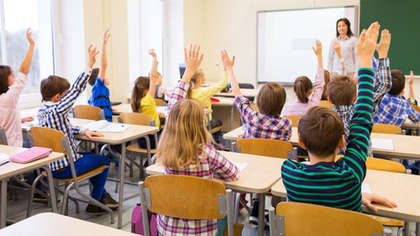
![]()
The Organisation for Economic Co-operation and Development (OECD)’s annual Education At A Glance 2021 report ranks 36 developed nations using education as a measure of national wealth or gross domestic product.
The report shows that Ireland spent 3.3% of its GDP in 2018 on education. This is below the EU average of 4.4%. The top performer on the list, Norway, spent 6.6% of its GDP on education in the same period.
"If we take GDP as a measure of national wealth, it is unacceptable that a rich country like Ireland remains at the bottom of the global rankings," said the Association of Secondary Teachers Ireland (ASTI) president Eamon Dennehy.
The largest single expenditure on education in Ireland is on school staff salaries. Between 2005 and 2020, the salaries of Irish teachers with 15 years of experience increased by an average of 16-17%. The average across OECD countries was just 2-3%.
Ireland's teachers were found to have significantly higher salaries than their OECD counterparts - $59,204 (€50,311) for primary and $61,652 for second level, compared to the OECD average of $45,687 at primary and $51,749 at second level. This is linked to Irish teachers working significantly longer hours – an average of 909 hours per year at primary level and 704 hours at second level, compared to the OECD average of 791 hours at primary and 685 hours at second level.
Despite ranking bottom of the list, there were positive results for Ireland in some areas.
93% of 15 to 19-year-olds were found to enrol in second-level education in Ireland, compared to the OECD average of 84%.
The percentage of Irish children from lower socio-economic groups performing at the lowest level in standardised tests is 16%, considerably lower than the OECD average of 29%.
However, AONTAS chief executive Dr Niamh O’Reilly highlighted that "Since March 2020 there has been a significant reduction in marginalised groups, such as Travellers, migrants and lone parents participating in education."
"The report shows a 26% drop in adults taking part in both formal and non-formal education and training," Dr O'Reilly noted. "The report also shows a clear link between education levels and earnings – 41% of 25 to 64-year-old adults with below upper secondary level education (less than Leaving Certificate) earned at or below half the median earnings in 2019. The average for OECD counties is 27%."